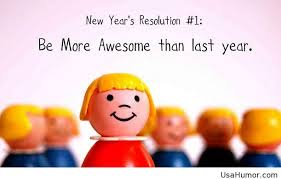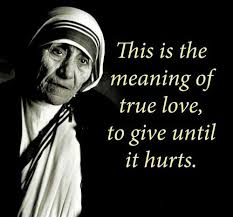 In my last blog post I talked about a USA Today article from John Waggoner titled “Resolutions you can keep,“ which I came across during my New Year’s Eve Napa Valley vacation. I mentioned that there were three important fundraising concepts in the final two column inches of this article that non-profit organizations should take to heart as they start a new year. Tuesday’s blog was about sustainable giving strategies. Today’s post focuses on sacrificial giving and upgrade strategies.
In my last blog post I talked about a USA Today article from John Waggoner titled “Resolutions you can keep,“ which I came across during my New Year’s Eve Napa Valley vacation. I mentioned that there were three important fundraising concepts in the final two column inches of this article that non-profit organizations should take to heart as they start a new year. Tuesday’s blog was about sustainable giving strategies. Today’s post focuses on sacrificial giving and upgrade strategies.
So, the second notable thing that Waggoner said in the final two inches of his newspaper article was:
“How much you give is, of course, up to you. C.S. Lewis noted that if your charitable donations don’t pinch or hamper you in some way, they are probably too little.“
As I mentioned in my previous post, my first significant charitable contribution was a $1,000 annual campaign pledge to the Boy Scout council that employed me back in the 1990s. I used that story to springboard off into sustainable giving. The funny thing is that the same Boy Scout story pertains to the second Waggoner quote that I’m using today.
So, there I was in my Scout Executive’s office and he was debriefing me after my first ever solicitation of a donor. It didn’t go especially well, and he pointed out that I hadn’t yet turned in my personal pledge card prior to going on my solicitation appointment with another fundraising volunteer.
He helped me see the importance of “making your gift first before asking others to make their gift.” Of course, he seized the opportunity and solicited me on the spot.
First, he asked me if I had decided how much I planned on pledging. I explained that I had never made a pledge to any non-profit organization and was thinking about making a $100 contribution.
 Then, he launched into a story about the importance of what he called “sacrificial giving” and “giving until you can feel a little pinch in your wallet.” The following are just a few of the reasons I recall from that conversation why it is important to give until it hurts:
Then, he launched into a story about the importance of what he called “sacrificial giving” and “giving until you can feel a little pinch in your wallet.” The following are just a few of the reasons I recall from that conversation why it is important to give until it hurts:
- You will feel good about supporting a mission that you love
- You will be demonstrating your passion to volunteers and donors
- You won’t feel like you’re asking someone to do something that you aren’t doing yourself
- The fear associated with asking people for money will melt away
While I was skeptical at first, I took the plunge with a $1,000 pledge. In hindsight, my Scout Executive couldn’t have been more right, especially about “eliminating the fear” associated with asking people for money.
With all that being said, I believe Waggoner’s second to last paragraph in the USA Today article begs the following question:
Does your organization have an “upgrade strategy”?
Fundraising analytics demonstrate that an individual’s first contribution is almost never his/her largest one. In fact, a donor’s first contribution is usually a token gift and very often a test. Uh-huh, you heard me right. The research data that I’ve seen indicates that:
- Donors want to see what their contribution will do
- They are interested in seeing how you engage them
- While they likely already believe in your mission, they want to really believe and want you to show them why they should
- Many donors are looking for signs that your organization is well-run and financially stable and responsible
- Some supporters (and I count myself as one of these types of donors) actually look forward to hearing success stories about your clients
So, if you’ve done a good job with stewarding your donors in 2014, then you need to have a strategy to ask your donors to consider making a larger contribution in 2015.
 Your strategy doesn’t have to be complicated. In fact, the following is a simple upgrade strategy that one of my former employers put together:
Your strategy doesn’t have to be complicated. In fact, the following is a simple upgrade strategy that one of my former employers put together:
- Identify donors who are ready to be asked to increase their giving
- Develop your case for support
- Identify volunteers with relationships to targeted donor
- Ask those volunteers to upgrade their personal contribution
- Solicit (making sure to involve someone they know well and who has also recently increased their giving)
- Steward (focusing on what the increased giving resulted in)
When developing your case, make sure to answer this simple question: “What will an X% increase in giving help your organization do and how will that in turn meet the donor’s needs?”
Of course, answering this question means that you need to know your donor and their needs, which likely means you’ve been talking with them about their philanthropic dreams/desires.
If you don’t like simple, then you might want to look into developing a donor recognition society that caters to the needs of donors who increase their giving. This donor society should contain considerations like:
- Special mention in your annual report
- Special communications
- Special recognition
The operative word, of course, is “special,” but the trick is to make the recognition feel appropriate and not over-the-top. Here are a few ideas that I’ve seen some organization’s use to make their recognition societies feel special:
- Quarterly get together (usually mission-focused)
- Routine communication specifically for members of the recognition society
- Small gift typically designating membership in the society (e.g. coffee mug, lapel pin, etc)
You shouldn’t go out and hire a skywriter to thank these donors, but you do need to go above-and-beyond if you decide to go down this path.
Does your organization have an upgrade strategy in place for 2015? If so, please scroll down and share it in the comment box below. We can all learn from each other.
If you want to read more about upgrade strategies, I found a really nice blog post from Joe Garecht at The Fundraising Authority titled “How to Upgrade Your Donors“.
Here’s to your health!
Erik Anderson
Founder & President, The Healthy Non-Profit LLC
www.thehealthynonprofit.com
erik@thehealthynonprofit.com
http://twitter.com/#!/eanderson847
http://www.facebook.com/eanderson847
http://www.linkedin.com/in/erikanderson847

Very well thought out and written article, thank you for sharing. As a not-for-profit organization you hit the nail on the head! I think what most people don’t realize is that for the most part, (at least mine) the time spent to network, market, print, share, exhibit, communicate, etc. is out of the goodness of ones heart. When you know that you are making a difference in the world we’re living, in the life of a child and community. You just keep on keepin on!
Joni Downey, President and Founder
Characters of Character
http://www.charactersofcharacter.org
Thanks, Joni! I totally agree. Thanks for all you do with the children of your community, and your commitment to keep on keepin on. 😉